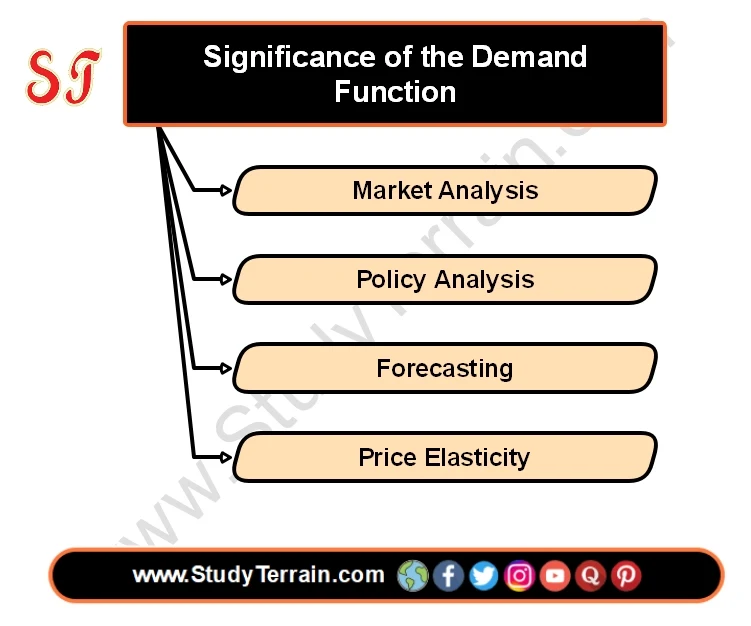In the field of economics, understanding the relationship between price and quantity demanded is essential for analyzing consumer behavior and market dynamics. One of the fundamental tools used to express this relationship is the demand function. In this article, we'll explore what a demand function is, how it's derived, and its significance in economic analysis.
Table of content (toc)
What is a Demand Function?
A demand function is a mathematical equation that expresses the relationship between the quantity demanded of a good or service and the factors that influence demand, particularly its price. It provides a quantitative representation of how changes in price affect the quantity demanded, holding other factors constant.
The general form of a demand function is:
Qd =f(P,Y,T,O,…)
Where:
Qd is the quantity demanded of the good or service.
P is the price of the good or service.
Y represents consumer income.
T represents the prices of related goods (substitutes and complements).
O represents other factors that influence demand, such as consumer preferences, advertising, and expectations.
How is the Demand Function Derived?
The demand function is derived based on empirical observation and statistical analysis of historical data. Economists use various techniques, such as regression analysis, to estimate the parameters of the demand function. By analyzing past sales data and observing how changes in price and other factors affect quantity demanded, economists can estimate the functional form of the demand equation.
For example, a simple linear demand function might take the form:
Qd = a−bP
Where:
a is the intercept, representing the quantity demanded when the price is zero (often interpreted as the level of demand when the product is free).
b is the slope of the demand curve, representing the change in quantity demanded for a one-unit change in price.
More complex demand functions may include additional variables to account for factors like income, tastes, and expectations.
Significance of the Demand Function
The demand function is a crucial tool in economic analysis for several reasons:
 |
| Significance of the Demand Function |
Price Elasticity
The demand function helps economists calculate price elasticity of demand, which measures the responsiveness of quantity demanded to changes in price. This information is vital for businesses in setting prices and forecasting sales revenue.
Forecasting
By using the demand function, economists and businesses can forecast the effects of price changes and other factors on future demand. This helps businesses make informed decisions about production, inventory management, and marketing strategies.
Policy Analysis
Governments and policymakers use demand functions to assess the impact of policies on consumer behavior and market outcomes. For example, they may use demand functions to evaluate the effects of taxes, subsidies, or regulations on consumer welfare and market efficiency.
Market Analysis
Demand functions provide insights into market trends and dynamics, helping businesses identify opportunities and threats in the market. By understanding how changes in price and other factors affect demand, businesses can adapt their strategies to remain competitive.
Conclusion
The demand function is a powerful tool in economics, providing a quantitative framework for understanding and analyzing consumer behavior. By expressing the relationship between price and quantity demanded, the demand function helps economists, businesses, and policymakers make informed decisions about pricing, production, and policy. As markets evolve and consumer preferences change, the demand function remains a valuable tool for navigating the complexities of the marketplace and achieving economic efficiency.
For more content visit KMBN 102



